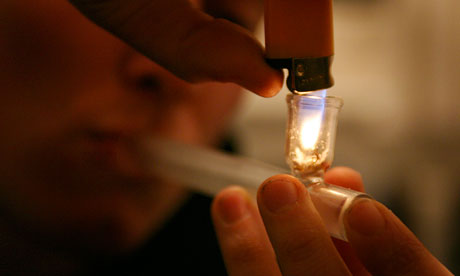
"Hello. My name is The Publishing Industry and I'm an addict. I can't stop publishing books about addiction. I once even was jonesing so bad I published a book which turned out to be more or less a complete fabrication. You know the one I mean. Anyway, at the moment, I am one day clean. But I don't know how long this can last." (The room breaks out in murmurs of encouragement.)
We have now been to so many AA or NA meetings, in the pages of books, that we can already smell the instant coffee, the cigarette smoke (where it's allowed), the feel of the cheap plastic chairs beneath our buttocks. We might well even see some familiar faces. What, you may wonder, ever happened to the second "A" in "AA"?
With Bill Clegg's Ninety Days you will certainly feel a sense of déja lu, because this is the sequel to his other drug memoir, Portrait of an Addict as a Young Man, published two years ago. In that book, he was an up-and-coming literary agent in New York who went on a two-month crack, vodka and sex binge, and not, really, in a good way. He lost the firm he co-founded, his apartment, his lover (although still managed to scrape together enough money for a course of rehab). Here, he has come out of rehab, and has gone back to Manhattan, with the goal of staying clean for 90 days – a period of time considered a milestone by those who endorse and follow the 12-step recovery programme. He manages, in so doing, to find a nice little studio in Manhattan, and enough money to go on more benders.
One wishes him well, for he has genuinely suffered, but this is really a kind of pornography for the non-addict, a cheap holiday in someone else's misery; and, for the addict, advice bordering on the banal: his final message is to "go to the rooms where alcoholics and addicts go to get and stay sober". And oh, how familiar it all is: he goes on the wagon. He falls off it. He climbs back on it again, and so on. At least the book has the virtue of relative brevity (and neither is it actually written badly).
Memoirs of an Addicted Brain, Marc Lewis's trajectory of addiction, is different because it started in the 1960s, first with an overlong account of the bullying he suffered at school, which places his future adventures in the pharmacopoeia in some kind of context, and encompasses enormous numbers and quantities of drugs. The difference here is that Lewis is a neuroscientist, and so can tell us what is going on in our brains when we take a particular drug. This is actually useful. He tells us why drugs make us crave more drugs. It is all about the dopamine, really: the creation of desire, in itself more powerful even than satiation, which is, of course, temporary. (Lacan was on to something when he proposed desire as the driving flaw, if you wish, of human nature; but he never gets a mention in these books, which, when they turn to the matter, are mechanistically inclined.)
"Whether in the service of food or heroin, love or gambling, dopamine forms a rut, a line of footprints in the neural flesh," writes Lewis. And for those who doubt that drugs can alter the neural pathways, he points out that even "learning to play the violin or the piano changes your brain permanently". It is in linking and comparing the changes to the brain made by drugs and those made by our daily routines that Damian Thompson finds his purpose. That little kick of pleasure you get when you order your insanely complex coffee from Starbucks? The thrill of a new product from Apple with a lower-case "i" in front of it? The time you spend on your phone, or on Facebook, or Twitter, or World of Warcraft, or online porn, or eating cupcakes? The same conditions of craving have been deliberately engineered, he claims, to simulate the cravings engendered by drug addiction. The drug, after all, is already there, in our heads.
I had not expected much from Damian Thompson's book. He blogs for the Telegraph and the occasional obligatory leftie-baiting that such a job entails has the occasional added twist of a problematic relationship with established Christianity. (He's a Catholic. I think.) But he is also an alcoholic, and his account of his relationship with booze has the ring of honesty. He knows whereof he speaks; and his description, in The Fix, of a society sliding down a slope of multiple addictions – where human interaction is replaced by interaction with things – is hugely plausible. (Horrifying example: in a study conducted at Stanford University in 2010, he tells us 8% of respondents "recalled thinking that their iPods were 'jealous' of their iPhones.") Such science as there is in his book may be of necessity simple compared with Lewis's, but it does not contradict it.
He is also hugely sceptical of the 12-step programme, which, given Thompson's own religious views, came to me as a surprise – but a pleasant one. His case against it – that it encourages the notion that addicts are in the grip of a disease they are unable to control – is made plausibly, and restores a sense of personal agency to the problem. "The behaviour of addicts looks voluntary because it is," he says at one point, which may enrage or dismay many, but the statistics of relapse among 12-step adherents tell their own story. Willpower may be a puny weapon in the face of the changes made to the brain by addiction – but it really is the best one we have, or can generate ourselves. For my own part, it was encouraging to see, from reading between the lines, my own pet theory about addiction endorsed: that another excellent cure for it is love.

